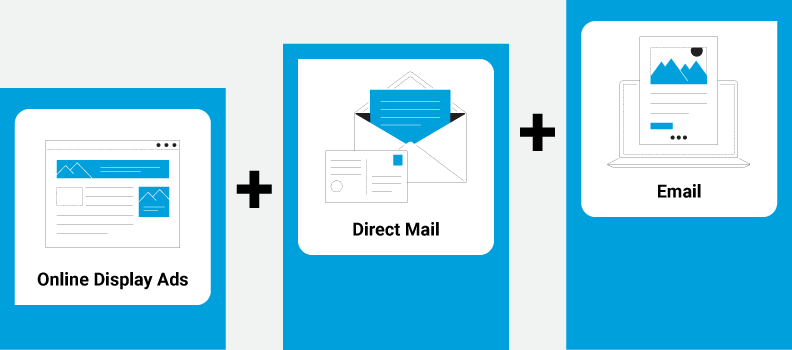Have you ever heard the saying, “The riches are in the niches”?
If this is true anywhere, it’s in the world of marketing! And more specifically when it’s time for your SMB to target its ideal market.
Now, contrary to what you may be thinking, narrowing down the size of your audience doesn’t limit your sales possibility. It offers endless possibilities for success!
Don’t believe us?
Below, our Ultimate SMB Guide to Target Markets shows you exactly how honing in on specific audiences can substantially increase your growth—and your sales.
But first things first.
What are the target markets for SMBs?
We’re glad you asked! These are specific groups of consumers who share similar characteristics, behaviors, or needs. A business will try to reach these groups regarding their products or services that are aligned to the individuals within the group.
Every business has a target market…even yours! Yet, not every business knows who theirs is. This is often due to limited resources, making it even more necessary! That’s because it can help SMBs tailor their marketing strategies and messages more effectively, reaching more potential customers, spending less money, and using fewer resources.
So how do you figure out who fits inside your target market?
You’ve got options! Target markets can be segmented based on various factors such as demographics (age, gender, income), firmographics (industry, revenue, number of employees), geographic location (country, city, region, ZIP Code), psychographics (values, lifestyle) or behaviour patterns (purchase history, web pages visited, ads engaged with).
It’s in truly understanding these segments that SMBs can identify which group(s) would be most interested in their product or service.
The trick to understanding your ideal markets
It’s important for SMBs to have a clear understanding of what they’re offering and who will benefit from it the most.
The question is, how do you do this?
Getting clear on the unique features and benefits of your product or service is the first step. To do this, ask yourself questions like:
- What sets your thing apart from others on the market?
- What problem does it solve for consumers?
- How does it improve their lives?
- What are its limitations?
From here, you’ll have a better understanding of your offerings. You’ll also gain insights into who might make the perfect customer.

Ready to narrow down your target market even further?
Consider factors such as age range, gender, income level, location, and interests and hobbies. That said, understanding your target market goes beyond basic demographics. It also involves knowing the pain points of your customers as well as their motivations for purchasing something like yours.
At this point, creating buyer personas can be helpful in visualizing who your ideal customers are and tailoring your marketing efforts accordingly. And before you dismiss buyer personas as being “too much work” or “not worth the effort”, consider the valuable return they generate. For example, by using buyer personas, Thomson Reuters saw a 175% surge in marketing revenue, a 10% uptick in leads sent to sales, and a 72% reduction in lead conversion time.
Already have an idea of who your target audience is and want to find more potential customers like them? Data Axle USA can help you through services like Customer Analysis and Profiling.
When you truly take time to understand the needs and desires of your ideal consumer, you can better position your SMB to meet demand and build a loyal following.
Connecting with your target markets

Now that you’re clear as crystal on your ideal customer, it’s time for the fun part!
Map their entire journey with you—from how they first discovered your brand to when they eventually made a purchase. This can help identify touchpoints in your target’s journey to market to and engage with them more effectively.
Why?
Understanding the feelings of your ideal customers along their journey to purchase also helps you to grasp their motivations behind purchasing decisions. More than that, developing marketing strategies that resonate with your target market is the key to connection and higher sales. There’s even a name for it: Emotional selling.
Emotional selling is a strategic approach that expertly taps into human emotions, forging deep connections with your potential customers. Through this method, marketers cater to the emotional needs, desires, and aspirations of their target audience, creating campaigns that really resonate.
According to Motista, emotionally connected customers are more likely to spend double on their favorite brands.
A business that understands their customers’ emotional triggers allows organizations to tailor messaging and branding in a way that evokes specific feelings—whether it be joy, nostalgia, trust, or a profound sense of belonging. This emotional resonance, when done well, cultivates intense brand loyalty and fosters enduring customer relationships.
How do you connect with your target market?
By providing valuable information that solves specific problems or addresses a need for your audience. Content such as informative blog posts, quick-hit videos, interactive quizzes, and even workshops can be used to establish your authority and build relationships.
Another vital aspect of tailoring marketing strategies is personalization. A 2022 Zendesk Customer Experience Trends Report says 68% of customers expect all experiences to be personalized.

Using it can make a difference when you want to make a big impression. Personalization can be as simple as addressing customers by their name on direct mail or email campaigns, sending content based on their interests, or creating targeted ads that speak directly to their needs.
Content marketing is also key. Address pain points through insightful blogs, provide helpful how-to guides and demos through video content, and showcase authentic testimonials.
Also, don’t overlook the power of search engines. A robust strategy involving Search Engine Optimization (SEO) and Search Engine Marketing (SEM)/Pay-Per-Click (PPC) is ideal for boosting your visibility and reaching your target market.
And let’s not forget sales promotions and loyalty programs. Tailoring your offerings to resonate with your target market is a fantastic way to retain customers and keep them coming back for more.
You can also participate in events like trade shows or take advantage of workshops to have valuable face-to-face interactions with potential customers. Plus, don’t be afraid to explore partnerships with businesses that share a similar target market.
Also, make sure your website provides an optimized user experience (UX). Personalize interactions based on user behavior and preferences to really connect with your audience on a deeper level.
From there, consistency is your friend in matters of connecting to your target markets. It’s not enough to reach out to your prospective customers once. Instead, maintain a consistent presence to keep them engaged and interested in your brand. This could look like posting to social media regularly or sending out newsletters at specific intervals. The goal is to stay top-of-mind all while continually nurturing your relationship.
Final thoughts
In today’s competitive market, small and mid-sized businesses need a targeted approach towards marketing and sales strategies. By narrowing your focus and identifying specific target markets, you can increase your chances of success. Remember: Focusing on a smaller audience doesn’t limit your potential for success. Instead, it allows you to truly connect with those who need what you have to offer.
Need help pinpointing your ideal customers? Access our Ideal Customer Identification Checklist. Or, if you’re ready to build a targeted list of businesses or consumers, fill out the form below and we’ll be in touch!







